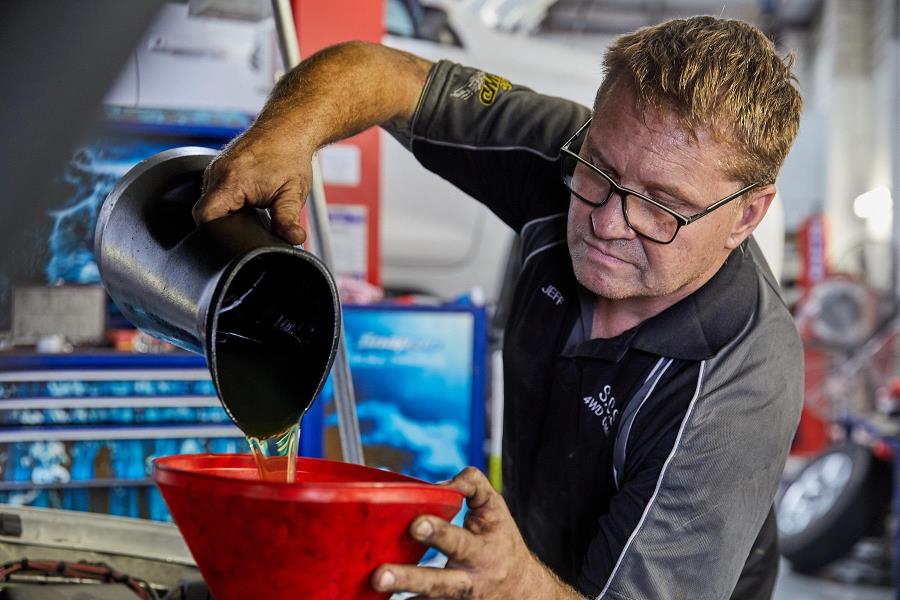It’s every business owner’s nightmare: you’ve got no way to earn money, but the bills just keep coming in.
To plan for this contingency, its important all Members consider if they have adequate business interruption protection – to help meet their expenses while their business gets back on its feet.
Capricorn Risk Services Sales Manager for South Australia and the Northern Territory Sam McNally said, from a risk point of view, he considers business interruption protection one of the most important forms of coverage any workshop owner can have. Why?
“If something happens, you can always replace tangible assets — lost property, tools, buildings and cars and all that stuff,” he said. “What you can’t do is get back the money that you haven’t made.
“And that’s what business interruption aims to do — it’s there to make sure that even though you’ve suffered a loss, there’s going to be no change to your bottom line. It’s there to keep food on the table and keep everybody employed.”
But what do we mean by an “adequate” level of protection?
“You should consider whether your limits of protection are enough so that, on a pro-rata basis, you can meet your weekly expenses,” Sam said. “For most Members, wages will be their biggest overhead.
“Then you’ve got to think about any other outgoings. It might be a mortgage repayment on the building, if you own it. It might be rent and other associated costs with leasing premises, if you’re a tenant.
“Then you have to think about your personal expenses. Do you have car finance? Do you have a mortgage on your house?”
While ensuring you have business interruption protection for wages and bills is important, Sam warned there are a lot of hidden expenses involved in shutting down and reopening a business after some kind of loss that may not be covered by business interruption protection but are covered by an optional benefit.
“This is all the extra stuff Members may need to spend money on to keep their business operating — for example, hiring an eco-hut you can install in the car park and use as a temporary office,” he said.
“Or if you have to relocate, the costs of moving or renting new equipment; or advertising costs to tell your customers that you’ve moved and it’s business as usual.
“That’s not linked to your week-in, week-out gross profit figure, but it’s part of the increased costs of working.”
These types of expenses are covered via an optional benefit called Additional Increased Costs of Working.

Another area Sam encourages Members to think about is the length of the indemnity period on their business interruption protection.
“In my experience, the biggest regret Members have is probably that they haven’t chosen a long enough indemnity period,” he said.
“The standard indemnity period would be 12 months. If something happens to your building, you’ve got to be able to clear the debris, get plans drawn up, get Council approval, get it built and be back in and operating inside 12 months. I certainly know of situations where that just didn’t happen.
“They might be adequately protected, but then the protection runs out after 12 months and they’re not back in.
“If you’re a property owner, might want to consider an 24-month indemnity period, because there’s so many factors that are outside your control.”
So, what should you consider when calculating the business interruption protection you need for your business? Sam suggests starting with your total turnover and gross profit figures, and the difference between the two.
“What does it cost you to keep the doors open each week?” Sam said.
“You’ve got to consider literally every single expense. Be as granular as you can. Look at every line on your expenses account. Remember, just because you’re not trading, doesn’t mean the bills stop.”
Then consider your additional and optional benefits along with the different indemnity periods available.
Sam also recommends acting immediately, rather than waiting for your renewal.
“Don’t wait, because something might happen and then you’ll have left yourself short,” he said.
“Be proactive and contact your Risk Account Manager. If you’re unsure, or you want some more information, or you don’t think you’re adequately protected, call us and someone will come out and see you. That’s what we’re here for.”
If you want to know more about business interruption protection contact your Risk Account Manager today.
AU: Products sold through Capricorn Risk Services Pty Ltd (ABN 93 111 632 789) are: (i) discretionary risk protection products issued by Capricorn Mutual Ltd; and (ii) general insurance products issued by a range of insurers and brokered through Capricorn Insurance Services Pty Ltd. Before deciding to acquire any product you should consider the Product Disclosure Statement available from Capricorn Risk Services Pty Ltd to see if the product is appropriate for you. Capricorn Risk Services Pty Ltd is a Corporate Authorised Representative (No. 460893) of Capricorn Mutual Ltd (AFSL 230038) and Capricorn Insurance Services Pty Ltd (AFSL 435197).
NZ: Products sold through Capricorn Risk Services Pty Ltd (NZBN 9429041139813) include discretionary risk protection and general insurance products. Discretionary risk protection is issued out of Australia by Capricorn Mutual Ltd. Before deciding to acquire discretionary risk protection you should consider the Product Disclosure Statement to see if it is appropriate for you. This can be obtained from Capricorn Risk Services Pty Ltd by phoning 0800 555 303 via email info@capricornrisk.com or by visiting website capricornrisk.com. General insurance products are issued by a range of insurers and are available through Capricorn Risk Services Pty Ltd as a member broker of PSC Connect NZ Limited. Capricorn Risk Services Pty Ltd is a registered financial services provider (390446) and a corporate Authorised Representative (No. 460893) of Capricorn Mutual Ltd (AFSL 230038).


